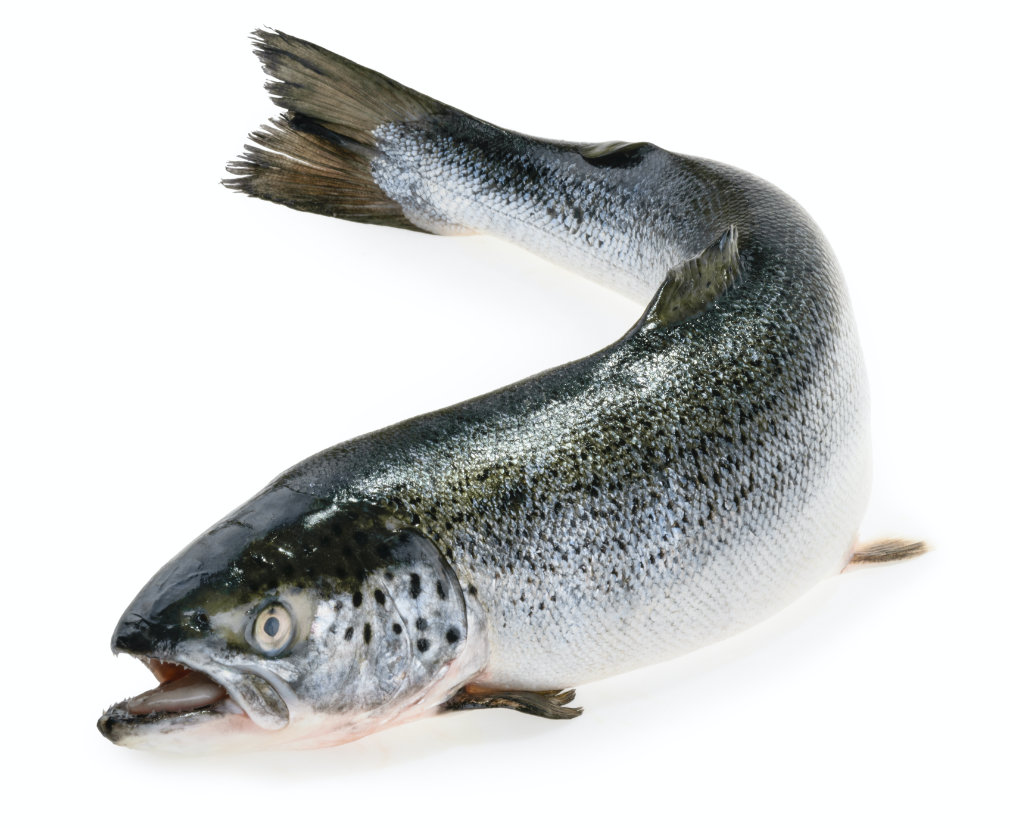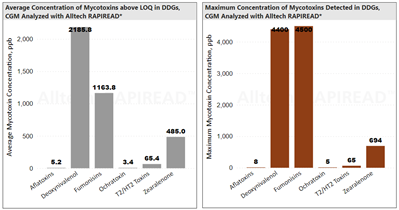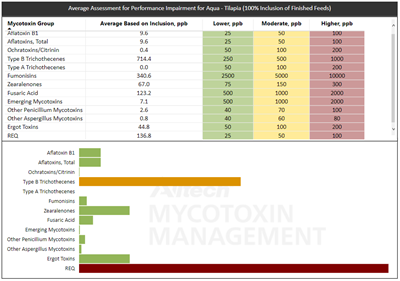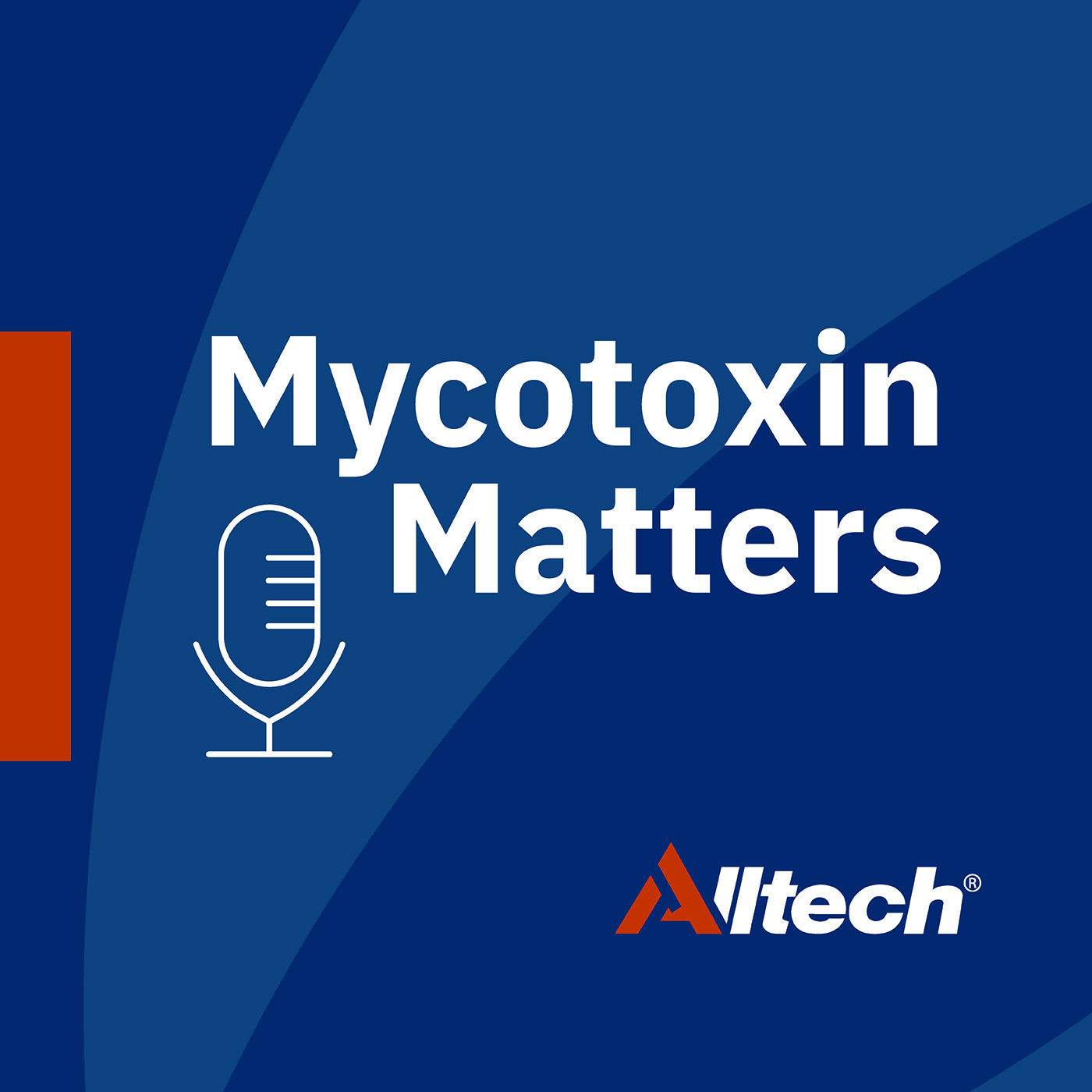Keep ahead of the threat
Stay up to date with the latest mycotoxin information by signing up to our newsletter

Mycotoxins: The latest challenge to aquaculture success
Click below to listen to the Mycotoxin Matters podcast episode with Henry Wong, hosted by Nick Adams. You can also hear the full audio or listen to the episode on Apple Podcasts or Spotify. You can find an edited transcript at the bottom of the page.
The continuous growth of the aquaculture industry will be crucial to providing food security for future generations. Therefore, our responsibility is to ensure that protein from aquaculture is of the highest quality available for human consumption. Asia Pacific is the largest aquafeed producing region and continues to increase. According to the 2022 Alltech Agri-Food outlook, Asia Pacific grew 3.3% in the last 12 months, with Indonesia accounting for 10% of this overall growth.
Over the past decade, there have been significant efforts to provide a sustainable food source to achieve this growth. Remarkable developments in reducing the inclusion of marine ingredients in aquafeed diets and replacing these with ingredients derived from crops and their byproducts have been achieved across the sector. As the industry strives to produce the most sustainable protein source, aquafeed nutritionists will continue to become more reliant on plant ingredients to formulate aquatic diets. This, combined with the challenges associated with climate change, can increase the risk of mycotoxin contamination.
Mycotoxins affect the quality of the feed that is produced, the health of your fish and shrimp, and, ultimately, the economic success of your farm. A recent study investigated the effects of dietary DON on the growth performance, immune response and intestinal health of turbot. The study showed that a diet contaminated with DON significantly reduced the weight gain, specific growth rate and feed efficiency ratio of fish. Additionally, DON-contaminated diets reduced the abundance of potential helpful bacteria and increased the abundance of potential pathogens found in the intestine (Wang et al, 2021).
2021 Asian Aqua Mycotoxin Analysis
During 2021, Alltech conducted a survey from across the Asia Pacific region to get an indicator of the mycotoxin risk in aquaculture, these results were presented in a live webinar in January. Almost 200 samples were collected from Bangladesh, China, India, Indonesia, Malaysia and Vietnam and were tested utilizing our Alltech 37+® analytical laboratories or locally using the Alltech RAPIREAD® system, utilizing Neogen lateral-flow technology. Samples combined complete feed and the most commonly used aquafeed raw materials. Most of the raw materials, such as corn, wheat and soybean, were imported from either Europe or the Americas.
Notable difference in risk between parent grains and byproducts
In aquafeed, it is not common for corn and wheat to be included in their natural form but in the byproducts. Globally, corn and wheat mycotoxin risk levels were relatively low. However, when corn and wheat are manufactured into byproducts, this magnifies the risk, as the same mycotoxin presence is now concentrated into a lesser mass.
Global corn

Corn byproduct: distillers dried grains, corn gluten meal and corn bran

This analysis has taken an average across all the samples analyzed, but there are significant differences between the highest and the average displayed, highlighting the importance of continuous testing.

The multiple mycotoxin challenge
As we understand more about the additive and synergistic effects of mycotoxins, it is becoming clear that the combination of multiple levels of mycotoxins at lower levels may present a significant risk to all aquatic species. Raw materials like rice bran and wheat flour contained more than four individual mycotoxins on average. Samples collected from freshwater species feeds displayed lower levels of aflatoxins, fumonisins and zearalenones, while DON just reached a moderate level. However, these combinations present a significantly higher risk to the freshwater species.

Plant proteins displayed an overall lower risk of mycotoxin contamination, most likely due to the growing seasons of soybean and rapeseed meals, when mycotoxin exposure is typically lower. However, low risk does not mean no risk. As the industry increases plant-based ingredients in aquafeed formulation, there will likely be higher inclusion of plant proteins. Although average mycotoxin levels may be lower in these ingredients, individual samples can still represent a higher risk, and the additive or synergistic effects of these could be more harmful, particularly in the early life stages where fish and shrimp are most at risk.
Effects of mycotoxins on fish health
Top 5 most prevalent mycotoxins found in the data analyzed:
- Type-B trichothecenes
- Fumonisins
- Emerging mycotoxins
- Zearalenone
- Aflatoxin

The presence of any mycotoxin in aquafeed diets will cause additional stress on the immune system, reduced growth performance and increased feed conversion ratios. Each mycotoxin can impose its own individual risk to each species. However, the combined synergistic effects over a long ingestion period can be more harmful. This can impact feed intake, growth rate and mortality rates and cause economic losses for farmers.
Climate change
With the ever-changing dramatic weather conditions that we have been experiencing globally, it is extremely likely that the presence of mycotoxins will increase. In Asia, there is a heavy reliance on imported raw materials, and this additional transport across the globe can even heighten the risk levels.
As always in Alltech, we take a holistic approach to managing fish and shrimp health. Mycotoxins can occur before the crops are harvested, during the feed and grain storage, and through harvesting, transportation, and storage. The only way to understand the true risk in ingredients or feeds you are using is to put a routine testing program in place and implement an effective system of dealing with the risk levels.
To find out how to manage the mycotoxin risk in your region, contact us or visit knowmycotoxins.com.








